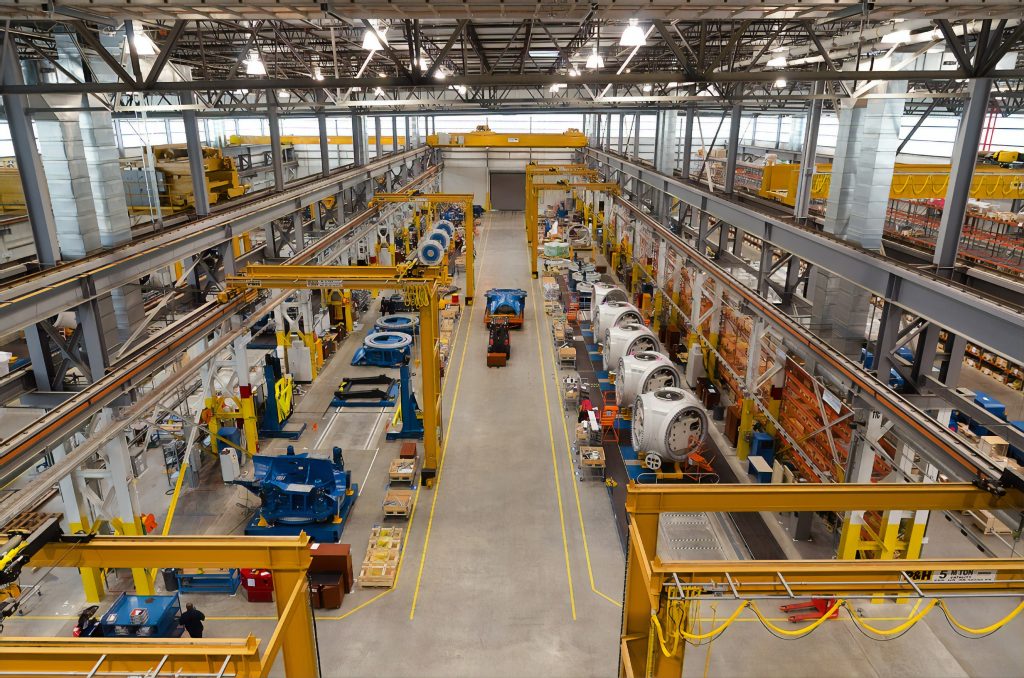Workplace safety should be top of mind in whatever industry you work in, but that’s especially the case when it comes to manufacturing. It’s a key concern for companies as it affects the operating performance as a whole. Mishaps could end up costing owners both employees and money.
It’s no secret the injury rate for workers in the manufacturing business is higher than normal. WorkSafe BC says the amount of serious injury claims they receive is double the claims of all other industries combined. But the good news is that number has trended downwards over the past few years, which means both the manufacturer and employees are taking safety more seriously.
We’ve compiled the top seven safety tips for owners and managers to help keep your workforce safe.
Top 7 Tips to Improve Safety and Security for Both Employees and Warehouses
1: Provide Consistent and Proper Training for Everyone
This may seem like a no-brainer but providing the proper training for each employee ensures everyone knows how to keep the workplace safe and what to do in case of an emergency. Training also provides your employees with the skills and education they need to keep themselves safe and prepared. While the standards range from province to province, it’s important to continuously update training and remind employees about how to stay safe. This could include weekly or monthly training sessions, newsletters with tips, and the requirement to complete online training or courses, such as fire alarm, bomb threat, or medical emergency workshops. Building a checklist to guide employee safety training is a great way to improve consistency and ensure that important information is not missed.
It’s important to recognize when extra training is needed as well, like if an employee is working alone. Taking extra precautions to ensure their safety is critical. Part of that could include security officers who are patrolling the site knowing when someone is working alone and checking in on them regularly.
2: Use and Maintain Equipment Properly
One of the biggest causes of workplace accidents is the misuse of tools and machinery. To prevent this, have a system in place to help keep staff trained and updated on the various use and maintenance for each piece. This could include a tool manual, daily log, monthly checks, regular cleaning and inspection, tagging machinery that is out of service, or fixing issues promptly when they arise. Refresher courses also help to ensure no bad habits have developed and manufacturer guidelines are being followed.
It’s important to also have a clean, tidy workplace, which includes all tools and equipment being put into their proper containers or spots when not being used. Something to keep an eye out for is dust as it could cause an explosion if it catches fire.
3: Have PPE Available and Ready to Use
This is essential when working with chemicals or cleaning up existing messes. Make sure your employees know how to properly don / doff their PPE and that it fits properly. PPE that does not fit or worn improperly will not do its job.
PPE can include masks, hazmat suits, hard hats, safety glasses, and gloves. Regular checks to ensure the product or item is working properly and undamaged, which will reduce the risk of injury.
4: Eliminate Hazards by Keeping up with Maintenance
In a manufacturing setting, it’s critical that issues are not left unattended, this could result in injury, death, or unplanned shutdown time. This could be something as simple as fixing a leaky pipe or ensuring all fire exits are clear of hazards. Trips and slips are the second most reported cause of nonfatal workplace injuries, so doing a quick check to ensure boards are nailed down or installing anti-slip flooring are easy fixes. It is also important to encourage employees to report potential problems early, which can be a massive risk mitigator.
Being on top of maintenance sends a clear message to employees that you care about their safety and the environment they work in.
5: Manage Issues Quickly
Larger safety issues could be a matter of life and death, so it’s important to be prepared and have a plan that everyone is aware of. Ask yourself if you or your employees would know what to do if they found themselves in a situation where they needed to act quickly. Are they aware of the protocols put in place or who to contact? Having that knowledge or plan easily accessible could save money, and ultimately, lives.
6: Create a Culture Around Safety
If employees know the company cares for them and there are protocols in place to protect them, they are more likely to do their part to keep safety a priority. Here are a few ways to help cultivate that culture:
- Have periodic safety meetings
- This will provide managers an opportunity to reinforce proper safety procedures and serve as a reminder to employees of their responsibility to keep the workplace safe.
- Encourage breaks from time-to-time
- Sometimes injuries happen when employees are tired. Taking a break allows them to refocus and be more alert.
- Make safety a habit
- It starts from the top down. If they see owners, managers, and supervisors taking the necessary precautions, employees will follow suit.
7: Hire a Team to Help Keep an Eye Out for You
Having a strong security plan that includes proactive officer patrols is extremely important for a number of reasons:
- Chemicals stored at many facilities are extremely volatile and dangerous and if only a small drop is spilled or leaking, it requires an evacuation of the entire facility, and possibly the surrounding neighborhood. At Paladin, our officers are trained to look around and observe any possible leaks or issues coming from chemical drums or totes that are stored in the drum yards or warehouses.
- Steam leaks are also an important item that security would be responsible for. Steam leaks can affect various items on-site, such as the hot rooms that require a certain temperature for the chemicals stored in there. Steam leaks can also cause bodily injury if not found and reported.
In most cases, if an issue is found, an email will then be sent to the proper maintenance department. If the issue is significant, a call list is used to have a maintenance employee come on-site immediately.
For more safety tips, don’t forget to check out the Ultimate Guide to Warehouse Safety.
For more Safety Tips around the security industry, make sure to read these helpful articles!
Photo by Science in HD on Unsplash












